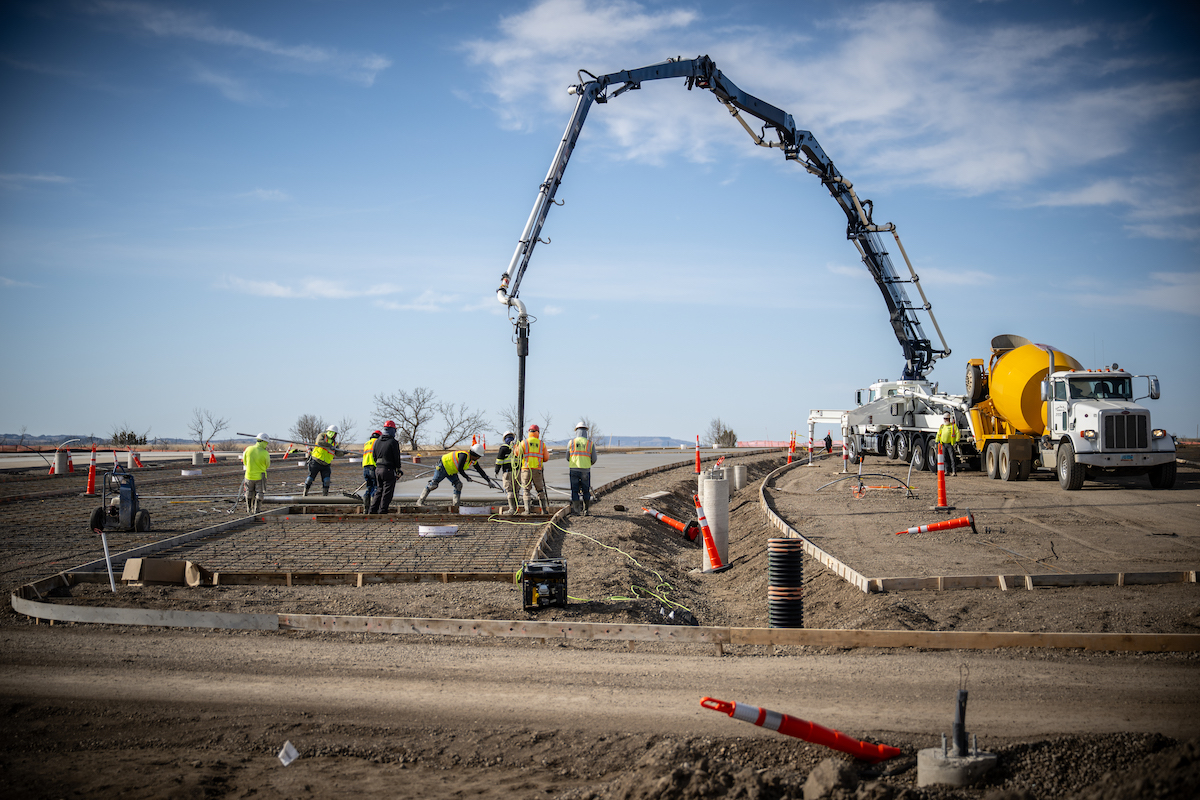The section of I-20 being worked on is in East Central Georgia, which is west of Augusta, and has an average daily traffic of 28,000 vehicles with 24 percent of the traffic coming from large trucks. The elevated volume of trucks is attributed to a few factors including more people having home delivery, freight logistics – as well as economic growth in the area, which includes an Amazon and Club Car facility within a major industrial park next door to the interstate. The pounding of the pavement from the trucks has led to some maintenance breakdowns.
“We’re committed to keeping I-20 in good condition,” said Kyle Collins a District Communications Specialist for GDOT who serves in East Central Georgia. “The state of Georgia does a good job of allocating funds to keep our roads in good shape, and the concrete condition in our area is rated at 91 out of 100.”
Collins notes that GDOT did a project in the area just five years ago. However, that’s enough time for things to evaporate. “Sometimes, we can’t get everything done in one fail swoop, and we have to come back in 5,7, or 10 years.” Avoiding such projects would mean that GDOT would ultimately have to tear up and replace a road, an expensive and time-consuming project.
The project includes the following: full-depth slab replacement in sections, pavement patching, grinding, joint replacement, asphalt shoulder patching, and striping.

| Your local Trimble Construction Division dealer |
|---|
| SITECH Northwest |
In terms of the slab replacement, large sections up to 12 inches thick are being sawed, pulled, and poured back. For those areas with less damage, the contract utilizes Fibercrete to patch visible cracking. According to the manufacturer, Fibercrete’s, “a proprietary blend of high strength concrete reinforced with special fibers and sometimes using steel reinforcement. Fibercrete makes possible the production of light weight, thin-walled, precast concrete parts.”
Collins says of Fibercrete, “It’s a hot applied patching material that is grey in color and once it is applied to seal a crack, it’s impermeable and seals the area off from the water damage.” He notes GDOT has used it successfully before on I-20.
The Fibercrete and underdrain work is being done to extend the life of the road. Both applications reduce water penetration into the road bed, which is one of the major contributors to life expectancy.
Regarding the grinding, GDOT is using diamond plated grinding rollers that move very slow. They take off a very thin layer of concrete to smooth out the lanes. Once the grinding is complete, the sharp edges or bumps where slabs have been replaced are evened out, which increases grip. The remaining mini grooves help reduce potential hydroplaning.
In another attempt to reduce hydroplaning and slab shifting over time, GDOT is installing underdrainage along the project’s new concrete locations. “Making sure the surface is safe and in good condition is our focus and a key reason why this project is taking place,” said Collins.

| Your local Volvo Construction Equipment dealer |
|---|
| Nuss Truck & Equipment |
In those sections of the corridor that are busier and are near metro areas, GDOT contractors are paving 3-inch depth asphalt shoulders. “We’re redoing or patching where we had section loss and restoring 10-foot shoulders on the outside and 4-foot on the inside lanes,” said Collins. Having a usable shoulder helps in emergency response and assists the everyday traveler requiring a stop.
GDOT has determined that I-20, which has two lanes headed in each direction, must be kept open. The contractor, who focused on the west side first, is only allowed to close 2 miles of lane at a time. “We have advanced warning for drivers, and message boards that may suggest alternate routes in the name of traffic control,” said Collins. “Traffic control is a concern as the area is potentially dangerous for workers and drivers.”
Collins expects the cost of the project to go up slightly. “As we were doing the project, we found more slab requirements in the area needed maintenance than we anticipated,” he said. “In projects such as these the plans don’t always match field conditions, and we have to adjust based on conditions.”
The project began in June 2020 and is expected to conclude in this spring. “Given the unpredictability of the winter months and supplemental changes to the contract, we expect to go beyond our original completion date,” said Collins. “We are hoping to have it completed by mid-late spring of 2021.”
Collins credits contractor Pittman Construction and subcontractors like Southeastern Grinding and Grooving and Applied Polymerics – with whom GDOT has good working relationships – as well as the high-quality inspection crew for keeping the project moving forward and near budget, despite the change in work the project is requiring.

| Your local Gomaco dealer |
|---|
| Hayden-Murphy Equipment Co |
When the project is complete, commuters will have a smoother ride along I-20 in the East Central section of Georgia. Waiting till the road is full of bumps and more maintenance is required might save time and money in the short run, but in the long run… Yes, GDOT is putting in an ounce of prevention in order to get a pound of cure.
Photos courtesy of Larry Morris and Josh Woodward, Georgia DOT






































































